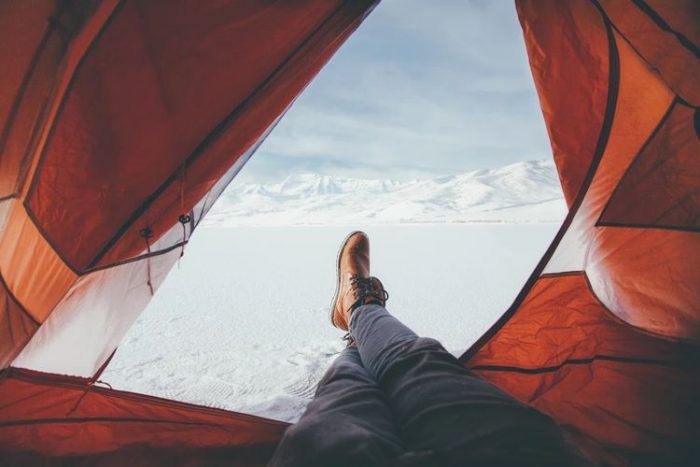When going out camping in the cold weather, you should be careful to keep warm. Knowing how to insulate your tent will help make your trip comfortable, and more importantly, safe. Even your 4-season tent can benefit from insulation. It gets trickier if you have a 2-3 seasons tent, but there are some workarounds.
Tips For Insulating Your Tent
A Small Tent Is A Good Winter Tent
Taking a small tent along is better than having a large, spacious tent. A small tent is easier to warm and insulate. A one or two-person tent will fare much better in the winter than larger tents. If a larger tent is a necessity for you, consider one of those specially made winter camping tents that allow room for a heater.
Place A Tarp Under Your Tent
Placing a tarp (tent footprint) under your tent is a good idea for tent longevity and better waterproofing. It’s an equally awesome idea for insulating and weatherizing your tent. It puts a barrier between your tent and the ground, reducing the risk of moisture inside the tent.
In case you have an oversized tarp, fold it so your tent sits on two layers of tarp. And there’s another winter camping hack to employ. Once you’re done setting up the tent, fold the edges of the tarp to go inside your tent/rainfly. This provides your tent walls an additional barrier against the wind.
Use Nature To Your Advantage
Once you’re done setting up the tent, use fallen/dead leaves in the area and place them around your tent. Simply pushing leaves against your tent footprint should do most of the work. The leaves themselves, and the dead air between these leaves create a nice insulation pocket for your tent. It’s also worth it to place your tent near shrubbery or a rock in a way that protects your tent from the wind.
Preparing Your Bed With Insulation
Layering is important for protection against the cold. When preparing to winterize a tent for your sleep, be sure to add some layers between yourself and the ground. If you have access to some cardboard, start by placing it as the bottom layer. It’s an excellent insulator and gives you a solid start.
Next, place an emergency blanket, with the shiny side facing you. Ideally, it should reflect your body heat back rather than letting it go to the ground, keeping things warmer. The next layer is your air mattress. If you have one of those manually inflated air mattresses, the exercise you do filling up the mattress is a great way to warm yourself up.
If you find yourself wondering “do I buy an air mattress or a cot?” consider going with the air mattress. A cot will leave space for air to move, and it could make things uncomfortable.
The next and final layer is your sleeping bag. If you’ve got a winter sleeping bag, it’s awesome. If not, consider adding another layer under your sleeping bag. Something like a closed-cell sleeping pad should be great.
Insulating The Top Of Your Tent
Another tent heating idea is to place one or two emergency blankets along the roof of your tent. Again, keep the shiny side towards you, so the tent can more effectively trap heat. Some people also prefer to add an extra tarp over the rainfly for added convenience, and another layer of protection.
Those shiny emergency tents can also be used for insulating your tent in the summer. This time, place them over the rainfly with the reflective surface placed outwards. It reflects sunlight away, keeping your tent cooler and better insulated for ac. Alternatively, you can also use a reflective insulation roll, like those from Reflectix.
Some Useful Winter Camping Hacks
Apart from knowing how to insulate your tent, you should employ some simple tips to stay warm. For example, knowing how to waterproof your tent comes in real handy. Knowing how to fix a leak could be a real lifesaver.
Cover your head when you sleep. We lose a lot of heat from our head, and keeping it covered can reduce heat loss. Similarly, keep your feet warm by wearing warm woolen socks or thermal socks. Do remember to change your clothes before sleeping so you are wearing something dry.
Condensation can be a problem since we can end up blocking vents while insulating a tent. If it becomes too troublesome, you can keep a few passive dehumidifier packets with you to absorb the extra water vapor.
How To Insulate Your Tent And Stay Comfortable
Knowing how to insulate your tent can be very helpful in staving off the trouble of sleeping in cold weather. Remember that safety always comes first and if you plan to camp in winter, be sure to have the right gear with you.
